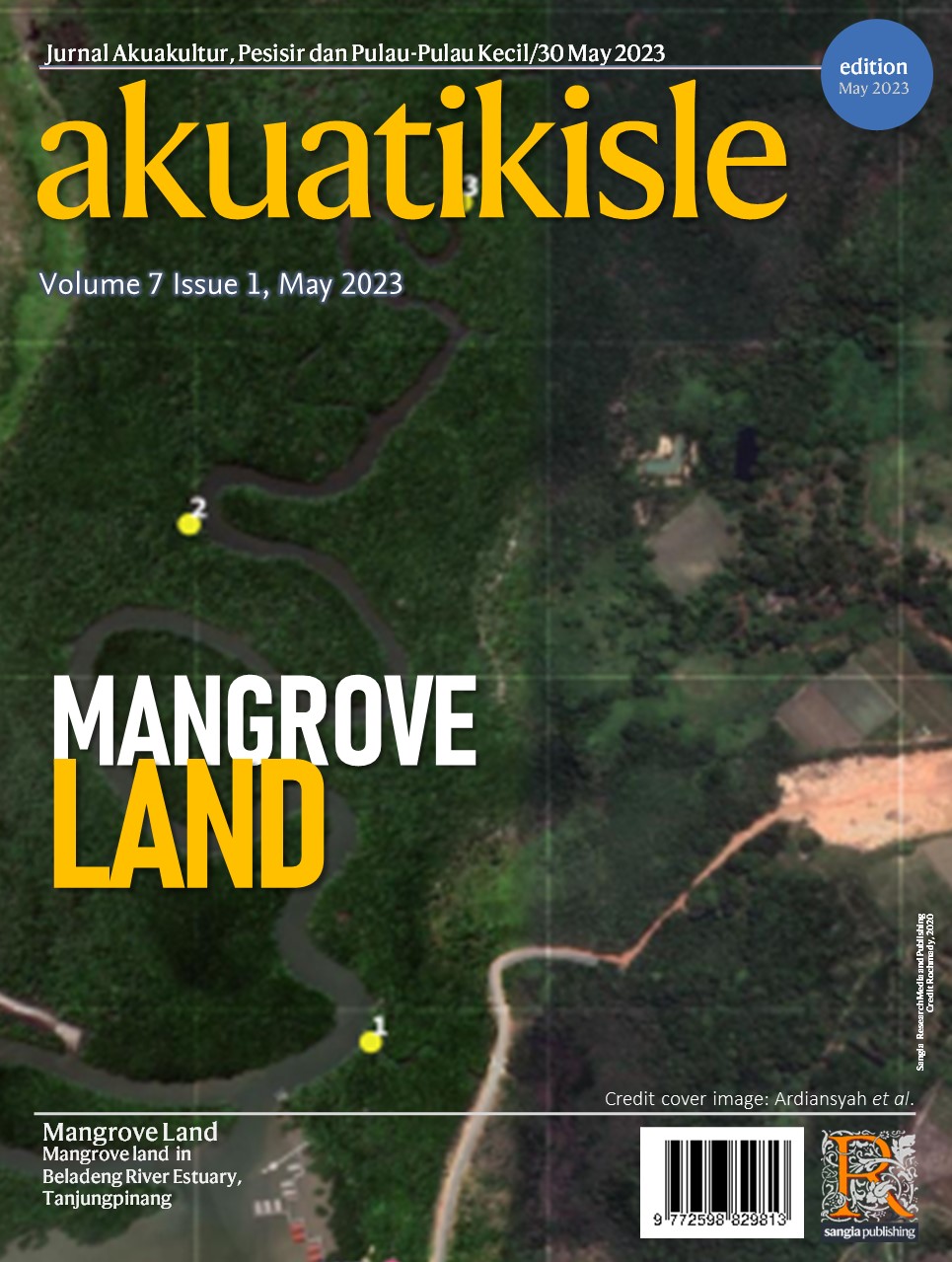Akuatikisle: Jurnal Akuakultur, Pesisir dan Pulau-Pulau Kecil
Full Length Article
Marketing analysis of catfish (Clarias batrachus) in Lingkungan Marusu, Maros Regency
Highlights
Generate NLP AI by Wizdam ID.
Abstract
The role of aquaculture is vast in efforts to increase the quality and quantity of fishery products and to meet the nutritional food needs of the people of the Maros and South Sulawesi Regencies. Catfish is one of the fisheries commodities that has good prospects for development. This is supported by the characteristics of catfish, which have high nutritional content, fast growth, are easy to breed, and can be maintained in almost all aquaculture containers. This study examines the flow of catfish marketing and analyses the differences in catfish prices in the Marusu Village, Palantikan Village, Maros Baru District, and Maros Regency. The research method was interviews assisted with a questionnaire instrument. The analysis used in this study is descriptive qualitative analysis for marketing channels and farmer's share analysis to measure the efficiency of acceptance of marketing channels for seed and catfish cultivators. The marketing channel for catfish seeds in the Marusu environment consists of 2 channels. Channel 1 starts from cultivators, collectors within the Marusu environment, and outside collectors and ends with cultivators outside the Maros area (consumers), channel 2 starts from cultivators, collectors and cultivators outside the Maros Regency area (consumers). The catfish marketing channel also consists of 2 channels. Channel 1, namely, starts with cultivators, retailers and consumers. Channel 2 is the cultivator directly to the consumer. For catfish fingerlings, farmers in marketing channels 1 and 2 are 75%, respectively. In contrast, the farmer's share in marketing channels 1 and 2 for catfish is 66.67% and 100%.
Keywords
Introduction
Section snippets
Material and Methods
Materials and methods from the full-text PDF of this article cannot be displayed.
Results
Results from the full-text PDF of this article cannot be displayed.
Discussion
Discussion from the full-text PDF of this article cannot be displayed.
Conclusions
Conclusions from the full-text PDF of this article cannot be displayed.
Acknowledgment
Acknowledgment from the full-text PDF of this article cannot be displayed.
Competing interest
The authors declare that they have no known competing financial interests or personal relationships that could have appeared to influence the work reported in this paper.
Conflict of interest
The authors declare that the research was conducted in the absence of any commercial or financial relationships that could be construed as a potential conflict of interest.
Ethical approval acknowledgements
No ethical approval required for this article. All procedures followed were in accordance with the ethical standards of the responsible committee on human experimentation (institutional and national) and with the Helsinki Declaration of 1975, as revised in 2008 (5)
Supplementary files
Data sharing not applicable to this article as no datasets were generated or analysed during the current study, and/or contains supplementary material, which is available to authorized users.
Bibliographic Information
Cite this article as:
-
Submitted
22 December 2022 -
Accepted
10 January 2023 -
Published
13 January 2023 -
Version of record
5 March 2023 -
Issue date
30 May 2023
-
Academic subject
Agrobusnis; Fisheries Science
Keywords
Copyright
Copyright © 2023 Lukman Daris, Alpiani, Ade Fitrah Maharini, Febri. Sangia Research Media and Publishing. Production and hosting by Sangia (SRM™).  This work is licensed under a Creative Commons Attribution-ShareAlike 4.0 International License.
This work is licensed under a Creative Commons Attribution-ShareAlike 4.0 International License.
Disclaimer: All claims expressed in this article are solely those of the authors and do not necessarily represent those of their affiliated organizations, or those of the publisher, the editors and the reviewers. Any product that may be evaluated in this article or claim that may be made by its manufacturer is not guaranteed or endorsed by the publisher.
Comments on this article
By submitting a comment you agree to abide by our Terms and Community Guidelines. If you find something abusive or that does not comply with our terms or guidelines please flag it as inappropriate.



